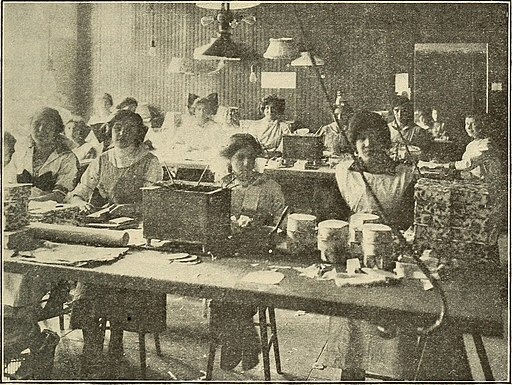What Happened to Vocational Educational?
A friend who is not involved in education recently asked me, "Whatever happened to vocational educational?" He was thinking about when he was a kid in school back in the 1960s and there came a point before high school where he was presented with a choice. That choice was to go on to high school and prepare for college or go to a vocational school and prepare for a job. That choice is not so evident today in America.
Vocational education in the United States varies from state to state, but vocational schools (AKA trade schools) are both seen as an alternative high school experience and as post-secondary schools. In both cases, they teach the skills necessary to help students acquire jobs in specific industries. Both types of schools still exist.
The breadth of offerings has certainly increased since my friend's options almost 60 years ago, but some industries still are options, such as cooking, business courses, drafting, construction, auto repair, and some healthcare careers.
If we are talking about the postsecondary vocational training, much of that training is now provided by proprietary (privately-owned) career schools.
About 30 percent of all credentials in career training is provided by two-year community colleges.
We should also consider military technical training or government-operated adult education centers as part of this area.
I taught at the New Jersey Institute of Technology (NJIT) and quickly discovered that many people unfamiliar with that university interpreted the name (especially the "institute" part) to mean we were a vocational school. (The Massachusetts Institute of Technology, MIT, doesn't seem to have this issue.)
The biggest difference between vocational schools and traditional colleges is the amount of time students need to complete their education. Most vocational schools offer programs that students can complete in about one or two years. Students attending traditional colleges often take four to five years to complete their education. Traditional colleges also require students to complete a liberal arts education. Students must enroll in a broad range of courses that are not necessarily related to their area of study. Vocational schools require students to enroll only in classes that pertain to their particular trades.

Manhattan trade school for girls, 1916
In the U.S., vocational education really moved forward in the early 1900s with an effort to introduce German-style industrial education. Educators were looking at the apprenticeship and continuation school models in Germany and were determining how they could be applied in an American context.
The industrial education system evolved more rapidly after World War I into what we call vocational education. On the timeline, the Smith-Hughes Act in 1917 was meant to reduce reliance on foreign trade schools, improve domestic wage-earning capacity, reduce unemployment, and protect national security.
The George-Barden Act after WWII expanded federal support of vocational education to support vocations beyond the 4 most common subject areas (agriculture, trade, home economics, and industrial subjects).
The National Defense Education Act of 1958 was focused on improving education in science, mathematics, foreign languages and other areas with a particular focus on topics related to national defense.
In the next decade, the Vocational Education Act (1963) was designed to give support for work-study programs and research. The Vocational Education Amendments (1968) was a modification that created the National Advisory Council on Vocational Education.
In 1984, the Vocational Education Act was renamed the Carl D. Perkins Vocational and Technical Education Act and amended six years later created the Tech-Prep Program to coordinate educational activities into a coherent sequence of courses.
Throughout the second half of the 20th century, vocation ed and "trade schools" acquired a stigma of being below the quality of college and just slightly better than high school. In fact, many vocational programs were in high schools and had become standalone vocational high schools during that time period.
This stigma even carried over to the 2-year colleges who were not aided by the use of the term "Junior College" that was once used before community and county colleges became the preferred terms.
Still, the "Stigma of Choosing Trade School Over College" persists, as that title from an article in The Atlantic notes.
"When college is held up as the one true path to success, parents—especially highly educated ones—might worry when their children opt for vocational school instead."
Vocational education in other countries https://en.wikipedia.org/wiki/Vocational_education#By_country
https://www.opencolleges.edu.au/informed/other/vocational-education-training/
Trackbacks
Trackback specific URI for this entryThe author does not allow comments to this entry
Comments
No comments